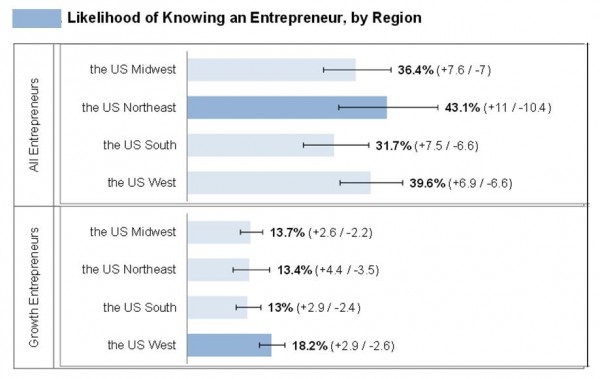Diversity Appears Lacking On Boards Leading Connecticut’s Technology Efforts
/As Connecticut steps up its push into technology fields, seeking increased economic activity and more jobs, two of the organizations often associated with propelling opportunity for entrepreneurs and existing tech businesses appear to be less than representative of the state’s diverse population.
The Connecticut Technology Council, a statewide association of technology oriented companies and institutions, has 49 individuals on their Board of Directors, according to the Council website. Based on a cursory review, among the 49 members of the board, one is African American, two are Asian, and six are women. The seven officers of the organization are all white males. 
Connecticut Innovations, a quasi-governmental organization, has 13 appointed members on its Board of Directors, along with four ex-officio members. Among the appointed members, none are women, none are African Americans, one is Hispanic, and one is Asian American. Eleven of the 13 appointed members are white males, a review of the website reveals.
The Connecticut Technology Council provides leadership in areas of policy advocacy, community building and assistance for growing companies. Speaking for over 2,000 companies that employ some 200,000 residents, the Council seeks to provide a strong and urgent voice in support of the creation of a culture of innovation, the organization’s website explains.
This includes working to position Connecticut as a leader in idea creation, workforce preparation, entrepreneurial aptitude, early stage risk capital availability and providing on-going support and mentoring to high potential firms.
The mission of the Connecticut Technology Council is “to build an interactive community of innovators and their supporters that can leverage these great advantages to create a thriving economy, job growth, a global reputation for entrepreneurial support, and a lifestyle that attracts the best and brightest people to come here and retains the young people who have grown up here.”
Since its founding in 1994, the CTC has had the continued support of the state’s leading corporations, which have enabled CTC to stimulate and facilitate the growth and awareness of technology-based companies throughout Connecticut. The CTC currently lists 10 major sponsors – including corporations, businesses and law firms – and 28 supporting sponsors.
Members include investors, startups, established public and private companies, university and private industry researchers, government agencies, academic institutions, local development agencies, and senior executives from a wide range of industries.
Connecticut Innovations (CI), a quasi-governmental organization created in 1989 to provide strategic and operational insight to companies to push the frontiers of high industries such as energy, biotechnology, information technology photonics, plays a key role in the deployment of the state’s efforts toward supporting innovation and entrepreneurship. The Connecticut Development Authority was folded into CI three years ago.
Connecticut Innovations’ Board of Directors includes four women serving in ex-officio capacities - all by virtue of the elected or appointed positions they hold: State Treasurer Denise Nappier, Department of Economic and Community Development Commissioner Catherine Smith, Deputy Secretary of the Office of Policy and Management Karen Buffkin, and Board of Regents for Higher Education Director of Innovation and Outreach Gail Coppage. Among the appointed members of the Board, none are women, none are African Americans, one is Hispanic, and one is Asian American.
The 17-member board is composed of nine members appointed by the governor and four appointed by the leadership of the General Assembly, as well as four ex-officio members who serve by virtue of their positions with the state: the State Treasurer, Commissioner of the Department of Economic and Community Development, the President of the Board of Regents for Higher Education, and the Secretary of the Office of Policy and Management (or their designees).
Connecticut Innovations’ Board of Directors is responsible for developing the overall strategic framework from which the organization creates policies and initiatives to help it succeed. The board is responsible for adopting an annual plan of operation and budget, overseeing the organization’s financial activities, including its investments, and overall governance of Connecticut Innovations. 
Connecticut Innovations’ board of directors announced earlier this month that Claire Leonardi has resigned as chief executive officer. Leonardi’s last day will be January 8, 2015, which will allow her to assist with the transition and help the board name a successor, according to a CI news release. Leonardi led CI for three years, and her accomplishments include its consolidation with the quasi-public Connecticut Development Authority, absorbing CDA.
CI was also in the news earlier this fall, when the quasi-public put on hold its investment and entrepreneurial programs until early next year because it lacked sufficient state funds to cover additional commitments, according to published reports. Funds were allocated by the State Bond Commission last month.
The State Department of Economic and Community Development (DECD) and CI have created an Innovation Ecosystem called CTNEXT. As a public-private partnership, CTNEXT catalyzes public and private resources to better support the formation, growth and attraction of companies with high growth potential, according to the state’s Economic Development Strategy report, published earlier this year. That document notes that “Diversity of people is also a critical prerequisite to innovation.”


 es (often with state financial incentives) the report offers guidance of factors influencing the frequency of entrepreneurial launches. Connecticut Innovations, established and supported by state government, helps Connecticut businesses grow through creative financing and strategic assistance, and is the nation's sixth most-active early stage investor.
es (often with state financial incentives) the report offers guidance of factors influencing the frequency of entrepreneurial launches. Connecticut Innovations, established and supported by state government, helps Connecticut businesses grow through creative financing and strategic assistance, and is the nation's sixth most-active early stage investor. in the United States was 36.7 percent. The likelihood of knowing a growth entrepreneur was considerably lower, at 15.4 percent.
in the United States was 36.7 percent. The likelihood of knowing a growth entrepreneur was considerably lower, at 15.4 percent.


























